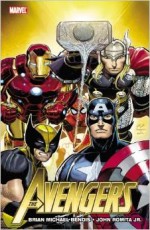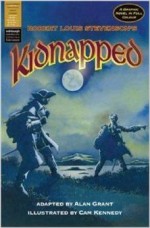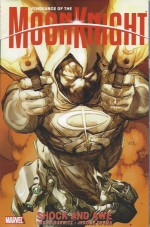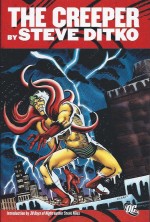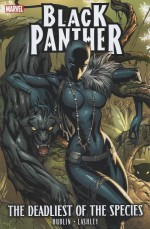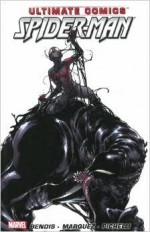
By Brian Michael Bendis, Sara Pichelli, David Marquez, Justin Ponsor & various (Marvel) ISBN: 978-0-7851-6503-3
When the Ultimate Spider-Man died, writer Brian Michael Bendis and Marvel promised that a new hero would arise from the ashes…
Marvel’s Ultimates imprint began in 2000 with a post-modern take on major characters and concepts to bring them into line with the tastes of 21st century readers – apparently a wholly different demographic from us baby-boomers and our descendents content to stick with the precepts sprung from founding talents Jack Kirby, Steve Ditko and Stan Lee… or perhaps just those unable or unwilling to deal with five decades (seven if you include Golden Age Timely tales retroactively co-opted into the mix) of continuity baggage which saturated the originals.
Of course the darkly nihilistic new universe soon became as continuity-constricted as its ancestor and in 2008 cleansing exercise “Ultimatum†culminated in a reign of terror which killed dozens of super-humans and millions of mere mortals in a devastating tsunami that inundated Manhattan courtesy of mutant menace Magneto.
In the months that followed, plucky Peter Parker and his fellow meta-human survivors struggled to restore order to a dangerous new world, but just as Spider-Man finally gained a measure of acceptance and was hailed a hero by the masses, he took a bullet for Captain America and very publicly met his end during a catastrophic super-villain showdown …
In the aftermath, child prodigy Miles Morales gained suspiciously similar powers (super-strong and fast and able to walk up walls, plus invisibility and a crippling “venom-chargeâ€) and started out on the same deadly learning curve: coping with astounding new physical abilities, painfully discovering the daily costs of living a life of lies and realising how a crippling sense of responsibility is the most seductive method of self-harm and worst of all of possible gifts.
He was helped and hindered in equal amounts by his uncle Aaron: a career super-criminal dubbed The Prowler. Things started to go spiral out of control the night Aaron Davis died in battle with the new arachnid hero in town, but now – months later – the repercussions of the televised event have finally caught up with the boy who would be Spider-Man…
Written throughout by Bendis, this luxurious hardcover collection (re-presenting Ultimate Comics Spider-Man #16.1 and #19-25, from December 2012 to June 2013) finds the juvenile wall-crawler recovering in the aftermath of a second War Between the States.
That internecine conflict almost destroyed the Republic but has left the traumatised public in no mood to tolerate mysteries or put up with unexplained and potentially dangerous characters and vigilantes.
The action opens with jump-on tale ‘Point One’ (illustrated by David Marquez
from Ultimate Comics Spider-Man #16.1) wherein unscrupulous reporter Betty Brant uses her considerable investigative skills to establish a link between The Prowler, the second Spider-Man, the genetic experiments of Norman Osborn and a guy named Morales.
As she digs deeper and follows the brief career of the new hero, Betty not only uncovers the remains of the genegineered spider which transformed Miles, but also learns far more than she should have from disgraced Oscorp biochemist Dr. Conrad Marcus, as well as engendering the unwelcome interest of scientific monolith Roxxon Industries and a brutal, relentless monstrosity…
The main event is 4-part epic ‘Venom War’ (art by Sara Pichelli) which opens in the days following the civil war. Child prodigy Miles and best-bud/superhero trainer Ganke are back at Brooklyn Visions Academy Boarding School. Miles spends only weekends at home, and now he and his confidante are eagerly attempting to master Peter Parker‘s web-fluid formula and wrist-shooters which the inexperienced hero has recently inherited.
As a mysterious monster raids and wrecks Roxxon’s HQ, in Manhattan homicide cop and ex-SHIELD agent Mariah Hill is investigating the bloody murder of a journalist. Her interviews at the Daily Bugle all lead her to the Davis/Morales home in Brooklyn.
Marcus’ dad Jefferson Davis has become an involuntary and extremely camera-shy celebrity because of his stand against the secessionist organisation Hydra. When a film crew bursts into the family home he understandably goes ballistic and kicks them to the kerb, but his fury is futile in the face of the towering, metamorphic horror known as Venom, which chooses that moment to attack the person it accuses of being Spider-Man…
The next chapter opens seconds later as the beast lunges, and in the family home Miles suits up and springs into battle…
The clash is savage and terrifying. As the TV parasites carry on filming, Jefferson joins the severely overmatched Spider-Man only to be smashed and broken like a bug…
The Arachnid kid goes crazy but his best efforts – and the fusillade of shots from the just- arrived cops – are useless. Only after the shattered lad employs his devastating venom blasts does he succeed in driving off the amorphous atrocity…
The shocking struggle has been broadcast all over the world. Elsewhere in Brooklyn two girls cherished by the original web-spinner immediately drop what they’re doing and rush to the scene of the battle…
Many months previously, as part of the crowd of grateful strangers attending Peter Parker’s memorial, Miles and Ganke had talked to another mourner, a girl who was intimate with the murdered hero. Gwen Stacy offered quiet insights to the boy child who had just acquired his powers and then altered the course of his life forever by sharing a simple mantra: “with great power comes great responsibilityâ€â€¦
Now she and Mary Jane Watson arrive at the crime scene ready to share their experience in keeping secrets just as attending detective Mariah Hill reaches the conclusion that the shell-shocked boy crying on the stairs is Spider-Man…
His mother Rio Morales is in the ambulance taking Jefferson to hospital and Miles is in no state to fend off questions from an experienced SHIELD interrogator or even speak to his equally traumatised buddy Ganke, but Gwen and Mary Jane certainly are and quickly shut down the situation and terminate the interview.
As they explain all the ghastly secrets of the Venom monster and its connection to the Parker family, speculation leads the youngsters to the idea that maybe the genetic quirk which made Peter Spider-Man might be repeated in the Morales family…
Deep below their feet the shapeshifting symbiote is reconstituting. Soon it breaks out of the sewers to again consume human hosts. The consciousness in charge of the marauding terror hasn’t given up its search for Spider-Man and is all too quickly bursting into the hospital where Rio is waiting for word on her husband…
The shocking conclusion begins with news of the assault reaching Miles. Hill, convinced she is right, gives Miles crucial advice for the battle she knows his coming. By the time Spider-Man reaches the medical centre Venom is carving a bloody swathe through the patients and doctors and the consequent clash is terrifying to behold.
With bodies falling everywhere Miles eventually finds a grotesque and dreadful way to stop the beast and expose the villain within, but in the aftermath realises that the awful cost has been another person he loves…
As the ruthless boss of Roxxon now makes Spider-Man his only priority, in Brooklyn Miles wakes from a deep sleep and realises his life has changed forever. At last he understands the horror and tragedy which underpins the legend of Spider-Man. This time though, the response to a death in the family is not guilty defiance and an urge to make things right, but a crushing, total surrender…
To Be Continued…
With covers by Sara Pichelli, this is a tense, breathtaking action-packed, thriller full of the humour and drama which blessed the original Lee/Ditko tales: a controversial but worthy way to continue and advance the legend that Fights ‘n’ Tights addicts will admire and adore… © 2012, 2013 Marvel Characters, Inc. All rights reserved.

